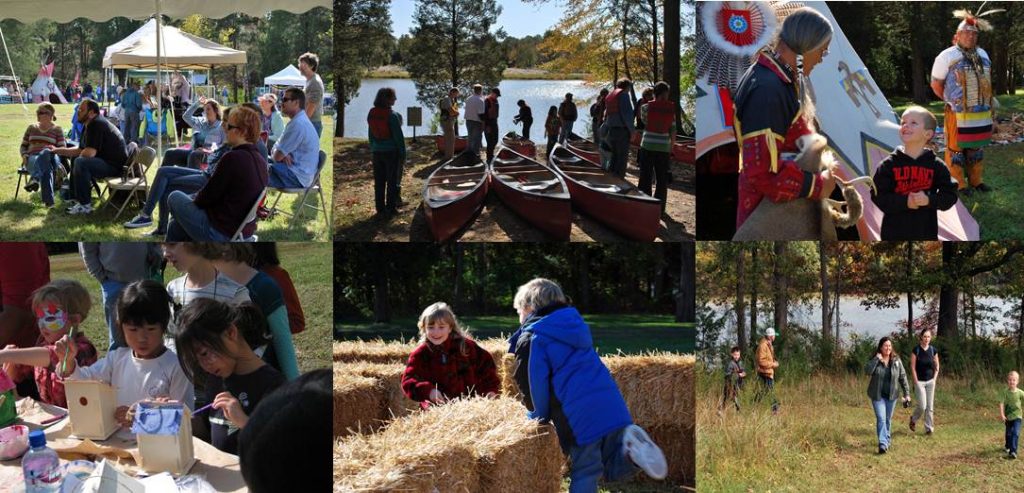Delaware’s St. Jones Reserve in Dover scores well in resiliency evaluation
DOVER – The Delaware National Estuarine Research Reserve (DNERR), a partnership between DNREC and the National Oceanic and Atmospheric Administration (NOAA), recently collaborated with 15 other National Estuarine Research Reserves in 13 coastal states on a first-in-the-nation research study that examined the capabilities of tidal marshes to keep pace with sea level rise. Results of the pioneering study, “Rising to the Challenge: Will Tidal Marshes Survive Rising Seas?” were recently published in Biological Conservation, an internationally-recognized journal of conservation and natural resource management. The study included a tidal marsh resiliency assessment of DNERR’s St. Jones Reserve in Dover.
“As a low-lying state, Delaware is highly vulnerable to the effects of sea level rise. Our tidal marshes provide the first line of defense for nearby communities – protecting people and property against storm surges and flooding and improving water quality,” said DNREC Secretary David Small. “This study provides a national comparison of marsh resilience to sea level rise, and provides critically-needed information that will help shape coastal policy and management decisions on protecting Delaware’s tidal marshes and the valuable benefits they provide.”
The study evaluated five categories that determine resiliency of a tidal marsh – marsh elevation, changes to marsh elevation, sediment supply, tidal range, and the local rate of sea level rise. Each category received a resiliency score from one to five, with one being the least resilience and five being the most resilience. The average score for all categories produced the overall resiliency score for each tidal marsh in the study.
“The St. Jones Reserve received an overall score of four, indicating the marsh is moderately resilient to sea level rise,” said Dr. Kari St. Laurent, research coordinator with DNERR’s St. Jones Reserve. “While the assessment determined that the St. Jones was highly resilience in some categories such as sediment supply, it scored poorly for its historical rate of sea level rise.” In other words, the study found that the pace at which the sea has risen in Delaware from the late 20th century into the present to be among the most acute pressure facing the St. Jones marsh.
The finding that the St. Jones Reserve and all participating marshes in the Mid-Atlantic region were vulnerable to rising sea levels as observed over the last few decades supports previous studies which determined that the region has some of the highest rates of sea level rise in the nation.
Most tidal marshes kept pace with rising seas through accretion, the buildup of sediments on the surface of the marsh, or by migrating inland, the gradual movement of a marsh toward dry land as it becomes flooded by sea level rise. However, sea level rise is projected to increase in the future leaving the fate of tidal marshes around the country uncertain. The study suggests that accretion at the St. Jones Reserve is helping to curb marsh loss due to rising seas, however, continuous monitoring is needed to determine whether vulnerabilities will arise.
DNREC will continue monitoring the St. Jones Reserve’s marsh for changes in resiliency and an upcoming tidal marsh assessment is being planned at the Blackbird Creek Reserve near Townsend – the other component of DNERR.
“The St. Jones assessment evaluated just one marsh in Delaware, so more collaborative work is needed to understand how other marshes in Delaware are responding to the state’s high rate of sea level rise,” continued Dr. St. Laurent. “Delaware Coastal Programs is encouraging local coastal managers to use this tool to assess tidal marshes and identify which marshes may need support through restoration practices.”
“The Delaware Research Reserve and the other sites in the Reserve System are committed to building on this study to create a more robust understanding of tidal marsh resilience nationwide,” says Rebecca Roth, the executive director of the National Estuarine Research Reserve Association. “Through consistent monitoring across a network of sites, reserves act as sentinel sites that can detect early warning signals of how estuaries are responding to the impacts of a changing climate.”
For more information, including a detailed description of the method published this week in the journal Biological Conservation and a free calculation tool, visit: www.nerra.org/marsh.
About the Delaware National Estuarine Research Reserve
The Delaware National Estuarine Research Reserve (DNERR) was established in 1993 to promote the stewardship and understanding of Delaware’s coastal areas through science and education. DNERR is a cooperative program between the Delaware Department of Natural Resources and Environmental Control and the National Oceanic and Atmospheric Administration (NOAA). DNERR consists of two components, the Blackbird Creek Reserve near Townsend and the St. Jones Reserve south of Dover. Both include brackish and freshwater estuaries, and represent the diverse estuarine ecosystems found throughout the Mid-Atlantic region. For more information, visit de.gov/dnerr, or check out DNERR’s Facebook and Twitter sites.
About the National Estuarine Research Reserve System
Established in 1972, the National Estuarine Research Reserve System is a national network of 28 sites along our nation’s coasts. Reserve-based monitoring, research, education, outreach, stewardship, and decision-maker training programs provide much needed information and services to coastal communities. Together, the System encompasses more than 1.3 million acres of coastal and estuarine habitat. Each Research Reserve is supported through a public partnership between a state agency and the National Oceanic and Atmospheric Administration’s Office for Coastal Management. The National Estuarine Research Reserve Association works to strengthen the Reserve network so it can better address growing challenges to our nation’s estuaries, coasts, and communities. Learn more about what you can do to support your local Reserve at www.nerra.org.
The Delaware Bayshore Initiative, a landscape approach to restore and protect fish and wildlife habitat, increase volunteer participation in habitat stewardship projects, enhance low-impact outdoor recreation and ecotourism opportunities, and promote associated environmentally compatible economic development.
No. 47, No. 16
